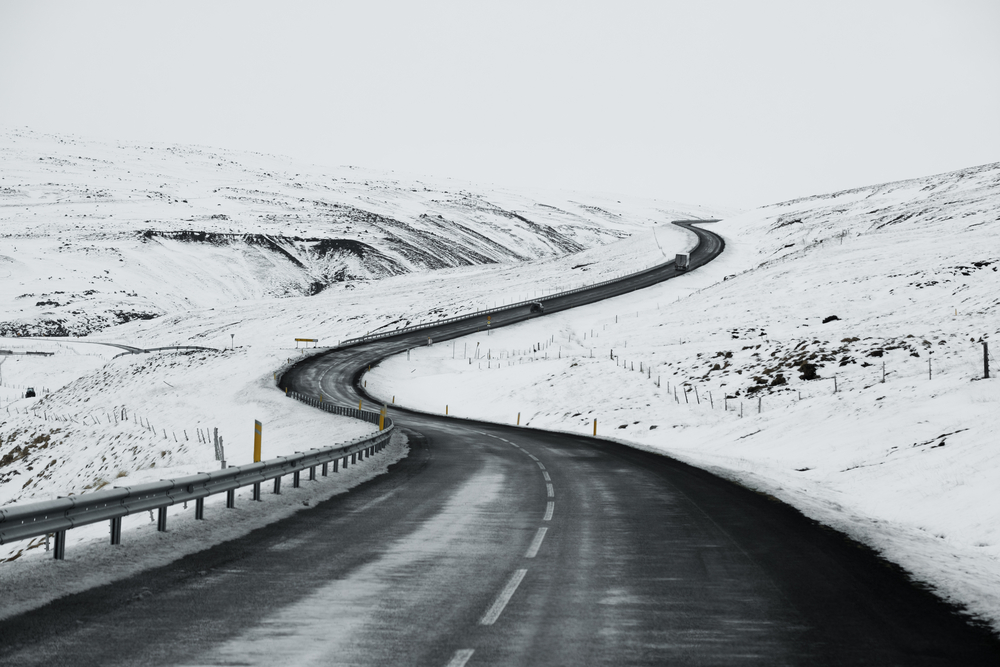Winter tyres
Europeans who live in regions that have harsher climates are very used to swapping their summer tyres for winter tyres. However, UK motorists can be a bit more sceptical about the benefits as our winters are relatively less of an issue. Still, you don’t need to live on a snowy mountain to enjoy safer driving on a set of winter tyres.
Despite the extra cost and hassle of swapping and storing sets of summer and winter tyres, it is certainly recommended if your budget allows it. Your local dealership will more often than not keep your winter or summer tyres for you and will swap them over relatively quickly when needed, and they may even refit for free if you buy the tyres from them.
Vehicles in France over mountainous areas must be fitted with winter tyres or snow chains between November and March under a law which aims to improve road safety. It is wise to check the area you are going to if you plan a trip to France anytime soon, as it is mandatory for drivers in several mountainous regions of France since November 1, 2021.
Why use winter tyres
Your summer or standard-fit tyres are designed with rubber compounds that provide the best grip in mild weather. Winter tyres, however, are made of different types of rubber compounds that are proven to offer better wet- or dry-weather grip at temperatures below 7 degrees Celsius. They have wide tread blocks and extra cuts in the tread known as “sipes” that give extra tyre bite to grip winter roads and displace accumulated snow. Some winter tyres are studded for extra-strong grip – crucial in areas that get tough ice all winter long. UK average winter temperatures are little more than 4 degrees Celsius, so it does make sense to invest in winter tyres, especially if you live in a remote part of the UK. Winter tyres also have special treads designed to help prevent the build-up of packed snow or ice around the tyre when conditions are more severe. At 20 MPH, winter tyres would stop 11 METRES shorter on icy roads than standard tyres.
Are winter tyres more expensive?
It is essential to change all four tyres to winter tyres, as often just changing the front or rear may not help in skid situations. When used correctly and only in adverse weather, winter tyres can last up to 6 years, so if you spread the cost over the years of use, they become more cost-effective. You shouldn’t be paying much more for winter tyres than the standard fit tyres, but it is worth shopping around and purchasing before the winter sets in. Premium winter or summer tyres can help to reduce fuel consumption with their lower rolling distances. As long as you are not driving in normal mild conditions with winter tyres, they will last a good time, they have a slightly softer compound for added grip, but they can wear quicker roads without snow or ice. You must never drive with a mix of winter and summer tyres.

Winter tyre socks or covers
You may not have to buy a complete set of winter tyres if you only need them for a few occasions over the winter period, and for this, you can now purchase winter Anti-Skid Snow and Ice Wheel covers or snow socks that are made of a mechanical fabric for cars and vans. The Universal Multi-griping tread is made of high-grip multifilament thread in 100% recyclable polypropylene. These can quickly be taken on and off by yourself and will help to get you out of icy situations nicely, but they will wear very quickly on roads in standard conditions; plus, it is illegal to use them in normal road conditions. Snow socks do not always meet the required standards in European ski resorts, so if this is one of your destinations, it is essential to get wheel chains instead. A low and steady speed limit must be adhered to while using fabric snow covers.
Winter tyre chains
Winter tyre chains can be tricky to fit but are great for icy and snowy driving, and you do need to have clearance of at least a 15mm gap between your tyre and your suspension as they will protrude by about 9mm. Again, they can only be legally used in wintery conditions as they do not offer grip for normal road conditions and can also damage the road surface. The maximum speed you should adhere to is 30MPH with snow chains fitted. Excessive acceleration or hard braking will put too much pressure on snow chains and may cause them to snap. Many European drivers will have to have a set of snow chains in the car by law.
